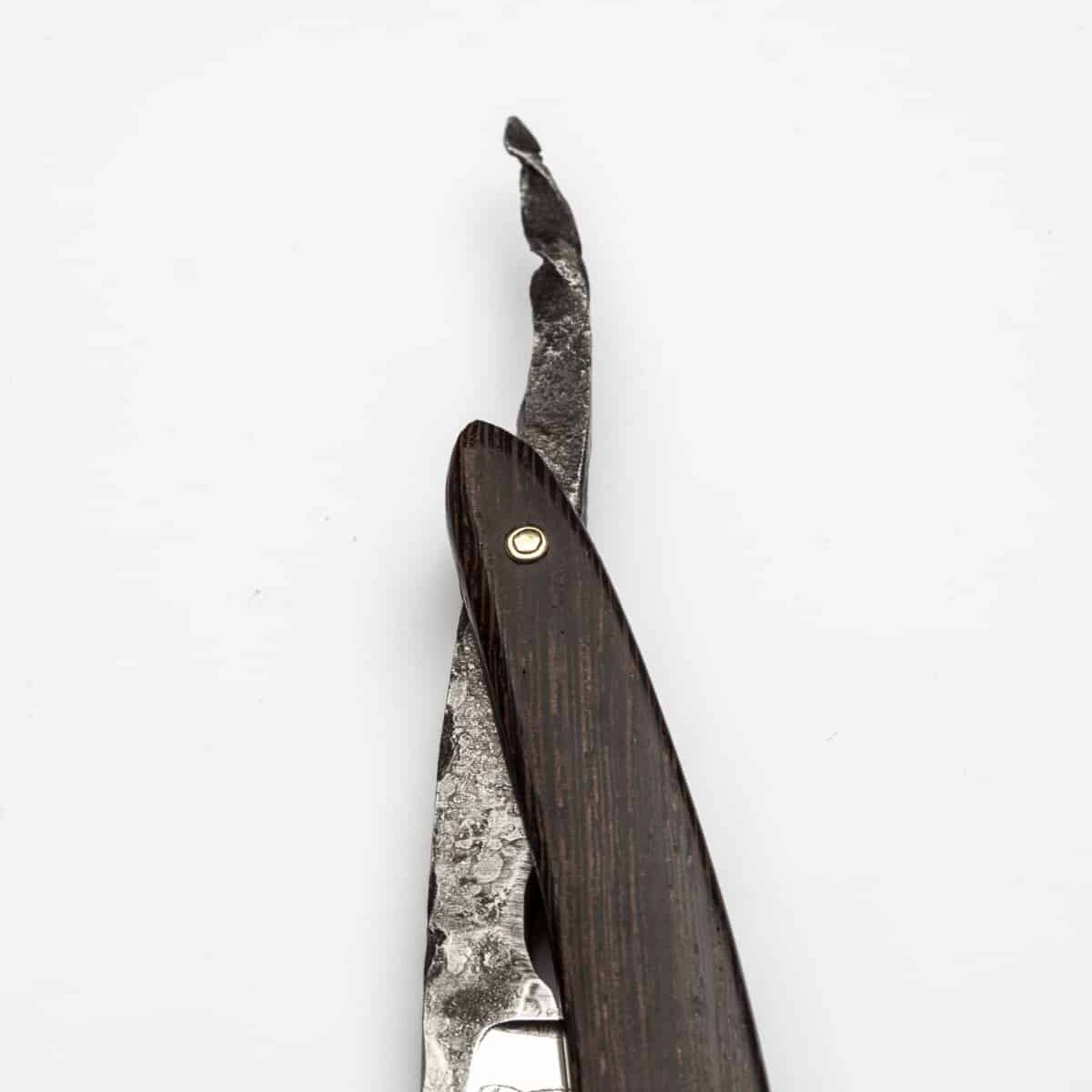
- April 23, 2016
For this blade, I interpreted historic Norse swords and the accompanying engravings. Serpents prevail through Nordic art, and I imbued this piece with such motifs. The finish of the spine and shank are heavily forged, with a serpentine twist at the tail. Bronze accents the wenge wood (used for it’s voids, communicating age, planks, and a longboat). The artwork is an entwined serpent, with Jörmungandr in the center. A small maker’s mark is hidden within the art.
In Norse mythology, Jörmungandr (Old Norse: Jǫrmungandr, pronounced [ˈjɔrmuŋɡandr̥], meaning “huge monster”), often written as Jormungand, or Jörmungand and also known as the Midgard Serpent (Old Norse: Miðgarðsormr), or World Serpent, is a sea serpent, the middle child of the giantess Angrboða and Loki. According to the Prose Edda, Odin took Loki’s three children by Angrboða–the wolf Fenrir, Hel, and Jörmungandr–and tossed Jörmungandr into the great ocean that encircles Midgard. The serpent grew so large that he was able to surround the earth and grasp his own tail.[2] As a result, he received the name of the Midgard Serpent or World Serpent. When he lets go, the world will end. Jörmungandr’s arch-enemy is the god Thor. It is an example of an ouroboros.
- 7/8" Wide Blade
- Bronze
- Forge Finished
- Twist in Steel
- Wedge Grind
- Wenge













